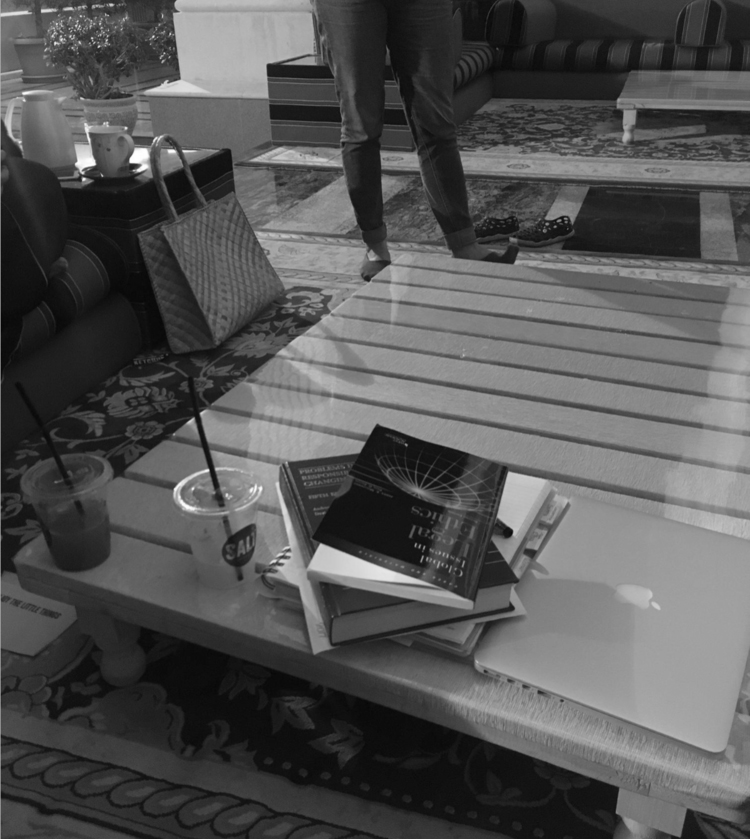Self Tracing
It's Not Easy Being Seen. Courtesy of Farah Al-Qasimi 2016
Using a dialogic self-reflexive method called Self Tracing, I asked my students to create “digital autoethnographies” in which they documented, digitally, the spaces and conversations they occupy during the course of the semester. This is followed by a self-reflexive process of thinking about how concepts learned in the “Women and Work in the Gulf” class are shaping their thinking, emotions, and interactions with others in the span of 14 weeks. They are also explicitly asked to reflect on the identities that they feel are salient in these spaces, including intersections of nationality, race, ethnicity, class, gender, and other intersectional identities.
Students are asked to accompany their digital documentation with a text that narrates the images to a specified individual(s) of their choosing and they present the autoethnographies to classmates in a group setting. Images are important because they are (mostly) not mediated by language and since English is the language of instruction in our classroom, this method attempts to bypass biases involved in writing in a language which is often a second or third language for some students. Also, images allow for moments to be collected through affective impulses rather than slow or intentional analyses. By becoming more aware of their own positionalities, and explicitly referring to them in their projects, students can see and learn from others about how gender is constructed and develop their own voice on social issues and important debates around gender in their own communities.
The Conversations I Had
In this video, the student reflects on how she had always believed that it was her “culture” that held her back from being an empowered woman but that she has started reconsidering this after taking the class. She reflects on the spaces that she occupies in AD on and off campus. She also reflects on memory work as a way to reinterpret one’s own experience. She describes how she came to understand that she is not only “a woman” but that her nationality, religion, and age are things that co-construct her gendered experience in relation to others. She also describes how she came to understand that, similar to her, migrant workers in her everyday life occupy “complex” dimensions as mothers, fathers, siblings, humans, and a source of income for their families.
Questioning Comfort: A letter to my mother
In this project, a student writes a letter to her mother. She tells her that thinking about gender inequality is hard, because it is affectively tied to comfort and loving moments. She describes how her grandmother’s welcome salutations gave her so much comfort, but that they were also problematic for her because of the gender essentialism involved. She describes a variety of spaces in which gender is constructed and performed in her daily life. She also reflects on the complex and contradictory affective spaces involved in “work” relationships with domestic workers.
Wash/Iron/Dress
In this project, the student stages the performance of domestic work in public spaces in Abu Dhabi. She reflects on her own experience and recalls that her grandmother performed paid domestic work (nanny/cleaner) in New Zealand. She discusses how “visible” issues of domestic work are in the UAE that have allowed her to see with more clarity how domestic work features in her own home country. She also reflects on how different her images would be experienced/perceived, had the race of the individual in her images been different (ie, non white).




